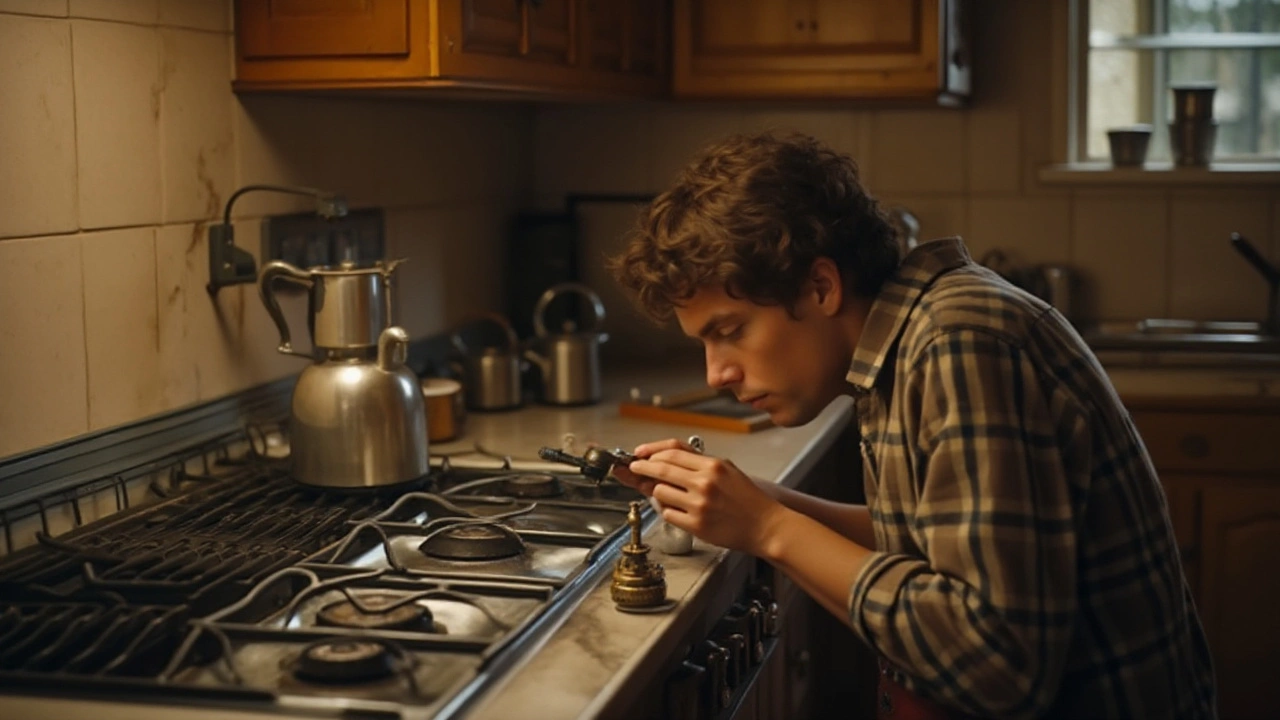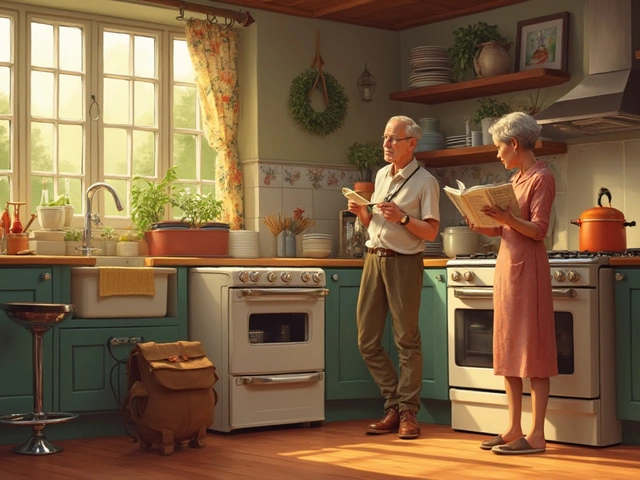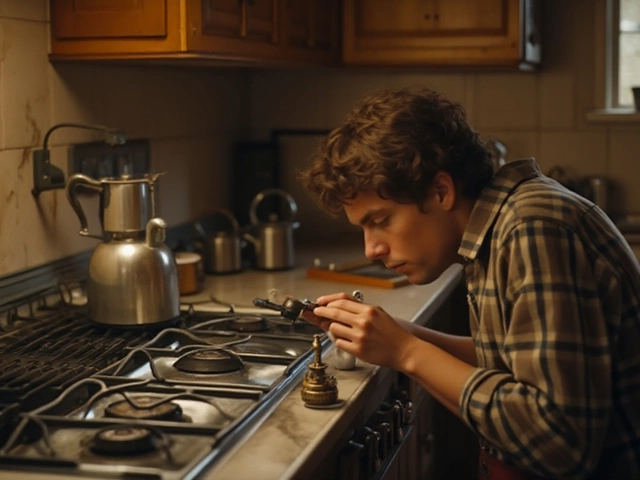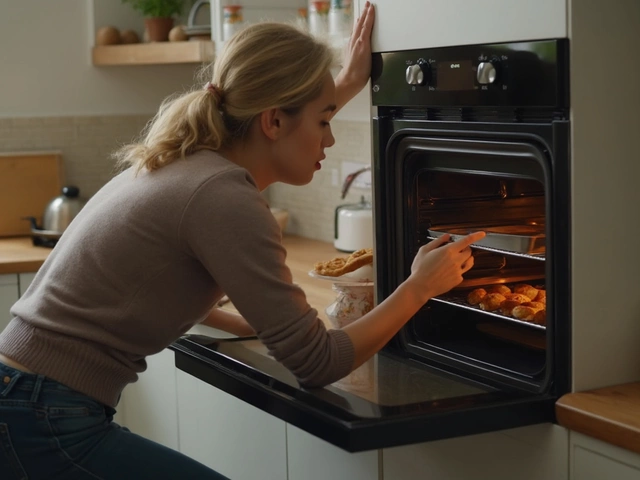In the heart of every home, the kitchen stands as a bustling hub where meals are crafted and memories are forged. At the center of this culinary operation is often the gas cooktop, a trusted ally in turning simple ingredients into delightful dishes. Yet, like any hardworking partner, even the most robust cooktop might face hiccups over time.
Fear not, as many common issues you may encounter with your gas cooktop are often fixable with a bit of patience and the right know-how. From burners that refuse to ignite to suspicious gas odors, we will explore practical solutions to get your cooktop back in action. Remember, some repairs are best left to the professionals, but understanding your appliance's workings can save you time and potentially costly service calls.
- Understanding Gas Cooktop Components
- Common Gas Cooktop Problems
- DIY Repair Tips for Minor Issues
- When to Call a Professional
- Preventive Maintenance for Longevity
Understanding Gas Cooktop Components
Gas cooktops are marvels of engineering, providing instant heat and precise control that cooks have treasured for generations. Yet, beneath their sleek surfaces, they comprise a fascinating array of components each playing a pivotal role in the cooking process. To embark on a repair journey, having a firm grasp of these individual parts is not just advantageous but essential. At the heart of the cooktop lies the burner, the very element where flames dance. Most household cooktops feature sealed burners, which are easily lifted for cleaning but contain a series of strategically placed holes from which gas escapes and ignites. Also hidden under the surface, you have the igniter, a small yet mighty component that gives life to the process by producing a spark to light the gas. This delicate piece often demands attention when issues arise.
Adjacent to the burners are the control valves, which manipulate the flow of gas and thus, the size of the flame. Their precision is vital; they must operate seamlessly to ensure safety and effectiveness. In Gas Cooktop Repair, understanding how these valves work can often help diagnose potential issues like a burner that won't light or a flame that refuses to adjust. Moreover, the manifold is another unsung hero – it is the distribution center where gas is funneled to various outlets that feed each burner. Behind all these components is a meticulously designed gas line, carefully installed to manage the safe delivery of fuel. It is crucial to check this network regularly for leaks, as safety should never take a back seat to convenience.
Modern cooktops may also feature electronic control modules, vastly different from their manual counterparts. These high-tech elements coordinate ignition and gas flow with efficient precision. Understanding their layout can aid in troubleshooting, especially if you are experiencing unresponsive dials or error codes. Gas cooktop repair often involves these modules, and a little knowledge can go a long way. Additionally, beneath the cooktop lies the drip pan, another critical piece though often overlooked in the course of repairs. The pan collects spills and splatters, serving as a crucial cleanup ally. It's designed to be removed easily, allowing simple yet effective hygiene maintenance of your appliance.
A wise technician often says, 'Understanding is power; to fix it, first, you must know it.' In many cases, a malfunctioning component may simply need some TLC through cleaning or realignment rather than a full replacement.
Finally, we cannot forget about the grates, those robust yet elegant cast-iron frames that cradle your cookware above the flame. They provide the stable foundation needed for flawless culinary creations. While sturdy, ensuring they're securely seated and free of debris is key to a smooth cooking experience. Taking a moment to understand the interplay of these components fosters a deeper respect for your cooktop and empowers you when tackling repairs. As you navigate kitchen maintenance, every insight into your appliance's anatomy illuminates potential solutions and enhances your mastery over this indispensable culinary companion.
Common Gas Cooktop Problems
Gas cooktops, valued for their instant heat and precise control, are beloved fixtures in many kitchens. However, they can develop issues that can disrupt their operation. One of the most frequent complaints home cooks encounter is a burner that refuses to ignite. This issue often stems from a clogged burner or a faulty ignition system. The ignition system, comprising the spark module, spark electrode, and wiring, is critical for creating the spark that lights the burner. Over time, these components can deteriorate or be coated with grease and food debris, impeding their function. Addressing this typically involves cleaning the burners and ignition parts to remove any obstructions or replacing defective components.
Another common problem with gas cooktops is uneven flame distribution. A healthy flame should be blue and steady. Orange or yellow flames not only signal improper combustion but also potentially pose safety hazards. These can be caused by an incorrect air-fuel mixture, often due to blocked burner ports. The ports may be cleaned with a fine brush to restore proper flame behavior. If the problem persists, adjusting the air shutter or checking the gas pressure might be necessary. Ensuring a proper mix prevents dangerous carbon monoxide emissions and ensures efficient cooking.
Gas leaks are another grave concern, as they pose significant safety risks. A gas leak can often be identified by a distinctive sulfur-like odor, typically added to natural gas for this purpose. If you suspect a leak, it’s crucial to act immediately—turn off the gas supply and ventilate the area. Professional intervention is usually required to pinpoint and rectify leaks, as they can stem from deteriorating valves or faulty connections. Ensuring that all parts are securely tightened and in good condition can help prevent this issue.
For some, the cooktop’s electric outlets might become unresponsive, making it difficult to ignite the burners. This might indicate an issue with the internal circuitry or a problem with the power supply. Examining the electrical connections for corrosion or breaks may reveal the fault. It is often best to seek professional assistance for electrical issues, as incorrect handling can worsen the problem or create new hazards.
The Department of Energy in the U.S. indicates that regularly maintaining your appliances not only provides energy efficiency but also extends their lifespan considerably.
A less common but noteworthy problem is widespread issues across all burners, which can signify a gas regulator failure. This regulator maintains the pressure of the gas entering the cooktop. If faulty, it could lead to insufficient gas reaching the burners or no gas flow at all. Replacing a gas regulator requires precise adjustments and should be handled by a professional to ensure safety and compliance with local regulations.
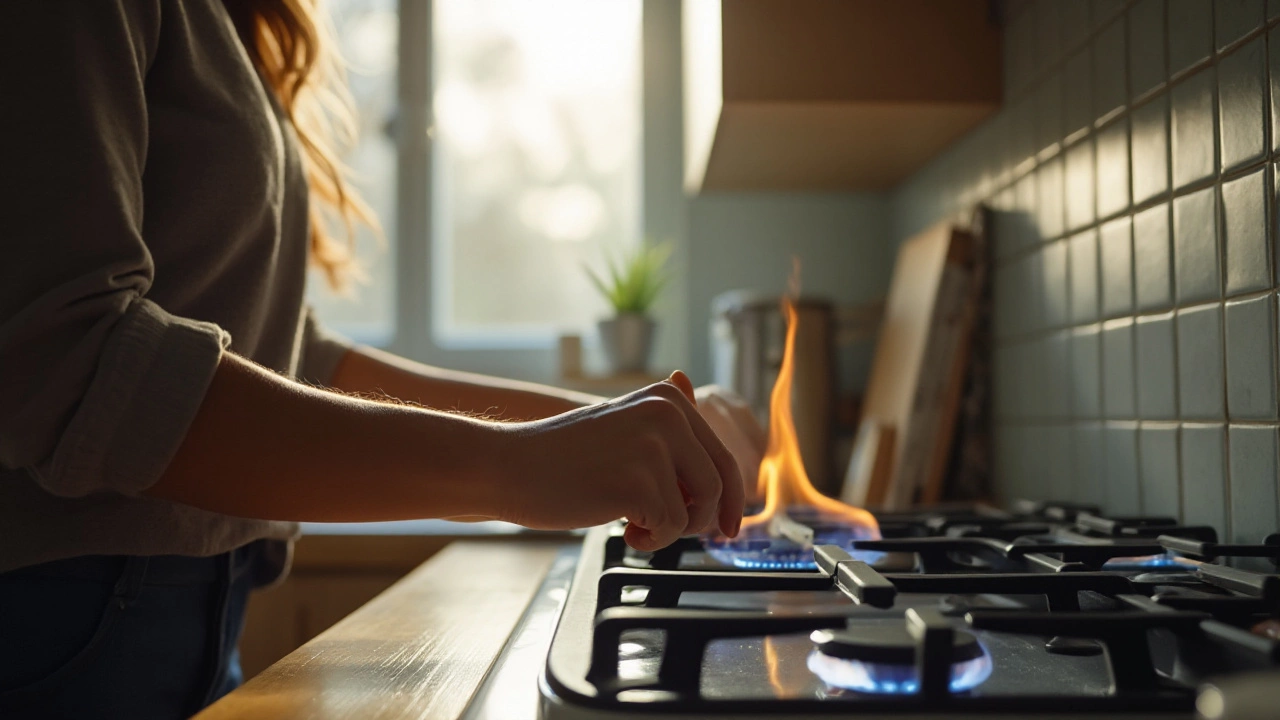
DIY Repair Tips for Minor Issues
It's not uncommon for gas cooktops to develop minor issues over the years. But before reaching for the phone to call a professional, there are several Do-It-Yourself fixes you can attempt. Understanding how to address these minor challenges could save you a significant amount of money and hassle. One typical issue many face is with the cooktop's igniter. Often, when a burner isn't lighting, it could simply be due to debris clogging the igniter. Taking a closer look at the burner head and using a toothbrush or a toothpick to gently remove any blockages might just do the trick.
If a burner produces an uneven flame, it usually relates to obstruction in the burner port holes. Make sure your gas supply is turned off before using a wire to clear out these tiny holes. Another thing to check is the positioning of the burner cap. Ensure it's correctly aligned, as misalignment can lead to a weak or no flame. In terms of gas leaks, your nose can serve as the best sensor. If you detect that distinct smell of gas, act immediately by ensuring that all knobs are turned off and opening windows to ventilate the space. A skilled technical hand should resolve more persistent issues.
For those adventurous enough to attempt replacing parts themselves, sourcing quality replacement components matching your specific cooktop model is crucial. Always cross-check with the appliance manual to ensure compatibility. As with any DIY repair, prioritize safety at all costs. Disengaging from the main gas supply before conducting any repairs is paramount to preventing accidents. The DIY approach doesn’t only empower homeowners with solutions but also brings a deeper understanding and appreciation for their kitchen appliances.
Common Minor Repairs and Solutions
Here, we delve into some of the more specific solutions to frequent issues found with gas cooktops. A common roadblock could be the unseated burner cap, which leads to difficulty in creating an even flame. This can be solved through careful placement and alignment of the cap. For electrical igniter issues—which may click continuously or fail to ignite—a close examination of wires and potential corrosion at connection points can be revealing. Regrettably, there can be instances when parts beyond our expertise need adjustments.
"A well-maintained cooktop not only enhances your cooking experience but also reduces the risk of home fires," affirms Alan Tinsley, a household appliance expert.
Tools and Materials
For many DIY repairs, having the right tools can make all the difference. A non-contact voltage tester often comes handy for checking electrical connections without risk. A microfiber cloth is excellent for wiping away grease buildup that tends to affect burner efficiency. Finally, possessing a selection of small screwdrivers and wrenches caters to any fastenings needing loosening or tightening. When buying replacement parts, remember: precision beats generality. Apply model-specific solutions and always prioritize safety; unexpected results can occur when methods are casually applied.
When to Call a Professional
Tackling gas cooktop issues can often feel like navigating a labyrinth fraught with unexpected turns. While many problems are within a homeowner's grasp to solve, knowing when to seek the skills of a professional is crucial for safety and efficiency. A significant indicator that it's time to call in an expert is the presence of a gas leak. Even the faintest whiff of gas requires immediate attention, as it poses a severe risk to your home and loved ones. Acquiring the expertise of a professional ensures that the leak is addressed promptly and effectively, minimizing any potential hazards.
Another scenario necessitating professional intervention is when your cooktop's igniter refuses to cooperate. If multiple attempts to address the issue bear no fruit, such as cleaning or real alignment, it's wise to seek out someone with the proper tools and experience. They can identify underlying problems, like faulty wiring or defective components, that may be eluding your eye. In many cases, the intricate nature of these issues makes it imperative to rely on someone versed in appliance repair to avoid further complications.
Electrical challenges within the cooktop system also warrant a professional's attention. While gas may be the primary function, electrically controlled features like digital displays, automatic ignitions, and timers introduce additional complexities. A specialist can offer a skilled hand in diagnosing electrical faults without compromising the cooktop's overall integrity. Attempting DIY fixes without proper understanding can exacerbate the problem, leading to higher repair costs down the line. In the words of renowned appliance expert John Trousdale, "Addressing complex appliance issues requires more than just basic knowledge; it demands a nuanced understanding of both function and form."
Moreover, if your gas cooktop requires replacement parts, it's often best left to a professional. Since cooktops come in a myriad of models, each with its unique configuration, having someone familiar with procuring and installing these parts is beneficial. An incorrect replacement or incorrect installation can severely inhibit performance or invalidate any existing warranties. Saving a few pounds by attempting a fix might end up costing more, should the appliance sustain further damage.
Lastly, insist on professional assistance whenever there's uncertainty about the complexity of the issue or if safety is a concern. Professionals in gas appliance repair are trained to adhere to strict safety protocols, ensuring that your cooktop is not just operational but also safe for everyday use. A stitch in time saves nine, or more so in this case, preventive expert intervention could save you from a potential gas-related mishap. In all these instances, the peace of mind that comes with knowing your appliance is in capable hands is often worth the investment.

Preventive Maintenance for Longevity
Keeping your gas cooktop in tip-top condition isn't just about repairs; it's also about preventing issues before they arise. The secret to longevity lies in routine maintenance, a credo that any well-functioning appliance swears by. Regular check-ups ensure your cooktop's components operate smoothly, reducing the risk of untimely replacements or repairs. Start by wiping down the surface of your cooktop after every use. Residue from spills and splatters can often corrode metal elements or clog the burner openings. Use a damp cloth with mild detergent, avoiding abrasive materials that may scratch the surface.
Dive deeper into maintenance by focusing on the burners themselves. Remove and soak them every month or two to dislodge any lingering food particles. A clogged burner can lead to uneven flames or, worse, no flame at all. While reassembling, make sure the caps are aligned correctly; even a slight misalignment can impact the performance. Don't forget the igniters, the unsung heroes in the appliance world. Check them periodically for any build-up that could block the spark. A simple brush once every few weeks can keep them clean.
Beyond cleaning, consider the condition of the gas lines feeding into your cooktop. While it’s not advisable to tinker with gas lines independently, checking for gas odors regularly is important. A subtle whiff of gas near your appliance might seem trivial, but it could hint at a leak. If you detect such a smell, it's crucial to contact a professional at once.
The area around your cooktop shouldn't be part of your oversight either. Keep flammable materials at a safe distance. Tidying up not only makes your kitchen presentable but also means there’s less clutter to unintentionally create hazards.
Sometimes, the best maintenance tips are just common sense. As cooking professional Jamie Oliver noted, “Caring for your kitchen tools is as important as caring for your hands—without either, creating something beautiful is a lot harder.”
Lastly, staying informed about your model's specifics is a tip that many overlook. Manufacturers often update user manuals with additional tips or recall information. This can be crucial in extending the life of your gas appliance. Hug that manual close, kind reader, and make a habit of revisiting it if you spot any strange behaviors.

